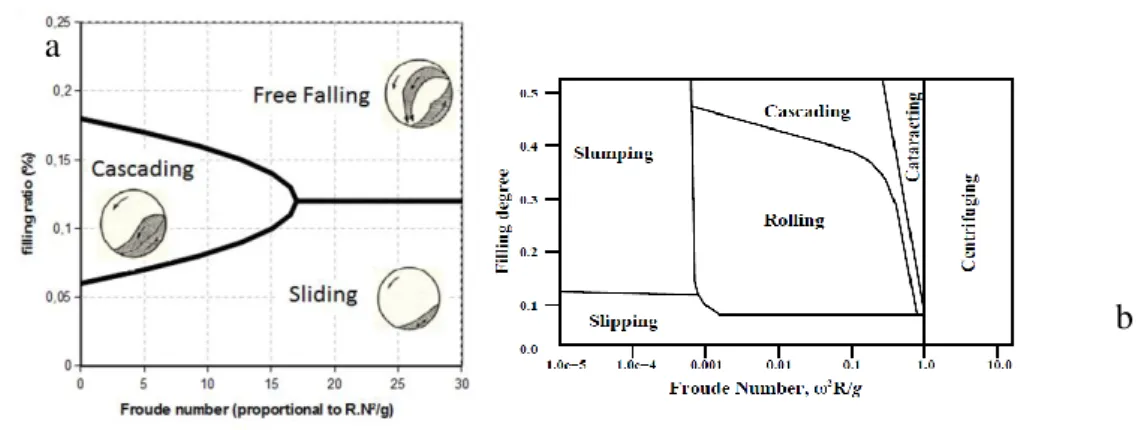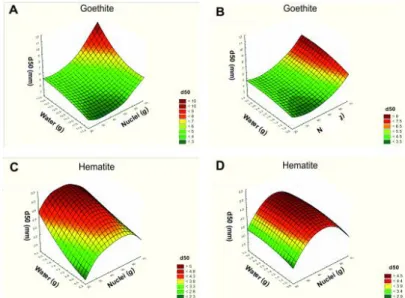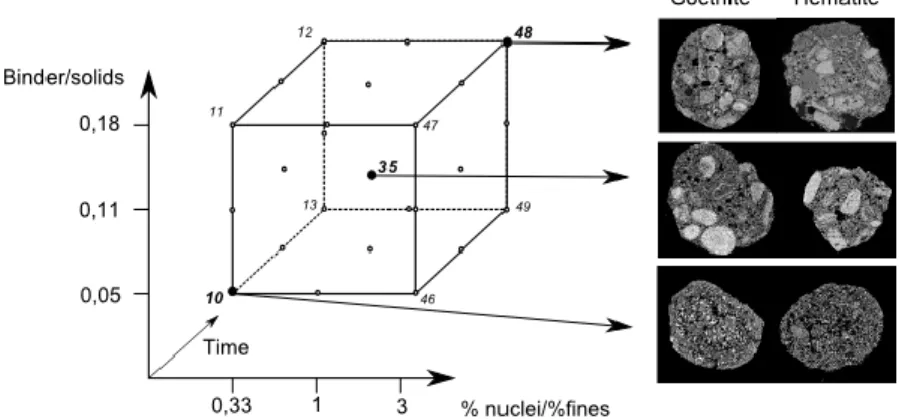Application of X-ray microtomography to investigate the effect of
raw material properties on the kinetics of iron ores granulation
Rafael J. Contreras1, Maxime Evrard2, Frédéric Van Loo1 Eric Pirard2
1
Centre for Research in Metallurgy, Avenue du bois St. Jean/21 Liège, Belgium Email: rafael.contreras@crmgroup.be
2
Department of Mineral, Materials and Environment Engineering, University of Liège, Belgium Email: eric.pirard@ulg.ac.be
ABSTRACT
In modern ironmaking, granulation is the first step of the sintering process. It is typically carried out in continuous drum granulators using water as a binder, and involves multiple components besides iron ores, such as return fines and other recycled materials (dusts, mill scale, sludges), solid fuel (coke breeze or anthracite) and fluxes (limestone, lime, olivine, dunite or dolomite) (Ball, 1973). As it is necessary to maintain a consistent quality of the granules (size distribution, porosity, strength, etc.) despite of the varying iron ore origins, the question arises as to how the properties of the iron ore particles (size and shape) influence the granulation process. The granulation process is partly influenced by the characteristic of the feed and partly by the action of cohesive force inside the drum granulator (Newitt et al. 1958). The objective of this paper is to study the effect of raw material properties on the kinetics of iron ore granulation considering in particular the mechanisms ruling wet granulation for two iron ores and to know the factors which determine the texture, shape, porosity and mechanical strength of the granules.
Keywords: Iron, granulation, growth kinetics, x-ray microtomography
1 CHARACTERIZATION OF PRIMARY PARTICLES
In this investigation, a goethite and a hematite iron ore concentrate have been used for the making of the granule. Two size fractions have been used: the 1-2mm acts as nuclei while the -250µm acts as fines (Hida et al. 1882, Roller et al. 1981). The composition of the ore concentrates is provided in Table 1.
%Fe %Fe++ %Cao %SiO2 %MgO %Al2O3 %Free C %Total S % L,O,I
Goethite 56,13 0,05 0,16 5,55 0,119 2,699 0,003 0,008 -10,68
Hematite 65,34 0,54 0,01 4,55 0,087 0,604 0,049 0,001 -1,4
Table 1. Composition of the primary particles (wt %)
A quantitative analysis of the minerals present in the two iron ore concentrates have been achieved using an optical multispectral imaging method. Each sample (graphic X) is composed of several iron minerals despite the mono-mineral name of the concentrate (table 2). These figures are very important because the mineralogy of the iron ore concentrate will have an impact on the granulation process.
goethite (wt%)
hematite (wt%) magnetite (wt%)
GOETHITE
99,5
0,5
/
HEMATITE
1,3
98,6
0,1
Table 2: Raw materials composition
The shape of the iron ore particles can be a very powerful parameter in the granulation process. Indeed, well rounded and/or specular particles have less chance to agglomerate each other than blunt particles (Khosa and Manuel, 2007). In order to characterize the shape of the iron ore concentrate for the different size fractions (fines and nuclei), elongation and roughness/bluntness properties of the particles were analyzed with Callisto, particle shape analyzer software.
An elongate particle has been defined by a ratio 1:4 between inner diameter and length (Figure 1) and only particles of more than 250 pixels have been studied to keep a good minimal resolution. The particles localized in the “interlocking by surface asperities” zone (Figure 1) present a high roughness
and a low bluntness which is propitious for mechanic bonds between particles. Only particles of more than 2000 pixels have been studied to keep a good minimal resolution.
Figure 1: Position of elongate particles and the interlocking by surface asperities zone in the diagram Results on Figure 2 show proportion of elongate particles and proportion of particle in the interlocking by surface asperities zone for both size fraction and concentrates.
Figure 2: Shape properties of the two size fractions
2 Experimental methodology
2.1 Kinetics of iron ore granulationIn theory, granules are composed of one single nucleus (iron ore particles with size above 1mm) around which fines (iron ore particles with size under 250µm) agglomerate. The granules result from the granulation of goethitic or hematitic iron ore concentrates with water (the only binder used is this experiment) in a laboratory scale batch granulator. No additional components were added to maintain the granule after natural drying. For each granulation experiments the binary mixtures have been mixed during 1minute (Figure 3a) in order to achieve homogeneous mixture of iron ores. Laboratory experiments were carried out in a stainless steel batch granulation drum 8.5 cm in diameter and 4.25 cm long (Figure 3b). In order to evaluate the iron ore granulation processes and the influence of different parameters, several tests have been carried out to set up the methodology to obtain suitable granules for the kinetics study of granules by asymptotic analysis.
a) b)
Figure 3: Experimental set-up for iron ore granulation: (a) TURBULA® Shaker-Mixer, (b) drum granulator. 0% 2% 4% 6% 8% Goethite Hematite % ( n b )
% elongate particles
0% 10% 20% 30% 40% Goethite Hematite% of particles in the "interlocking
by surface asperities zone"
1-2mm >250µm
The main variables to affect the motion of particles in a drum are rotational speed and filling degree or installation of lifting bars and flights (Mellmann, 2001, Ishikawa, 1977). According to the literature (Litster and Waters, 1986, Litster and Waters, 1988, Litster and Waters, 1990, Litster et al., 1993) granulation of iron ores is normally reported in the cascade zone (Figure 44a) when the granulator has lifting bars (Kapur, 1978). In our drum granulator (without lifting bars) the best results were obtained in the rolling motion (Figure 44b), the drum speed was kept the same for all the tests, and equal to 17 rpm corresponding to a Froude number of 0.013 (Eq. 1).
Fr = r2g (eq.1)
The filling degree was determined empirically for each iron ore between 10 and 20 %, this condition has been chosen to ensure a constant mass of 90 g for each experiment.
Figure 4: The different types of bed motion: (a) with lifting bars (Ishikawa, 1977), (b) with smooth surface (Mellmann, 2001)
The residence time was divided en three steps: rolling mode, water addition and granulation time. The first one was the flow regime (rolling mode) in which the bed surface is continuously renewed during ten seconds, there was no addition of water in the granulator. While the drum continued to rotate, the required amount of water was poured by means of a needle (0.4 mm diameter); a dosing pump was used to keep the same flow rate and injection time for each trial (over a period of 2 min); the exact mass of water added in each experiment was obtained by weighing a graduated cylinder before and after water addition. Then the drum was rotated for the predetermined time (granulation time). At the end of the residence time the drum was weighted and the size of granules was measured with the standard test method for sieve analysis. The granules have been sieved into 9 size fractions using the following sieve sizes:
10 mm, 6.3 mm, 5 mm, 3.15 mm, 2 mm, 1 mm, 0.5 mm, 0.25 mm, pan.
90g of iron ore feed materials is put in the drum. After 1 minute of rotation, water is added to the mix progressively with a syringe during the choosing time of granulation.
In this experiment, the granules are composed of one single iron ore concentrate for nuclei and fines: goethite or hematite. Several parameters have been tested for the making of the granules: the ratio binder-solid (5%, 10%, 15%), the ratio nuclei-fines (25%, 50%, 75%) and time of granulation (1, 2 or 3 minutes) (Figure 5).
Figure 5: Number of experimental condition in function of the different parameters
a
Figure 6 shows response surfaces for goethite and hematite granules. The d50 of these granules are obtained by a dry sieving/screening of the granules without any hardener addition. For goethite (A and B on figure 6), the increase of the d50 of the granules is link with the increase of water content and with the proportion of nuclei. The granulation time seems to have a lower impact on the d50 of the granules. In both graphics, a minimum is observed between 30-35% of nuclei. According to the Pareto’s diagram, the most powerful parameters for the granulation process of goethite are respectively % of nuclei , % water and then granulation time. For hematite (C and D on figure 6), a maximum “ridge” is present in C and D and corresponds to an average percentage of nuclei around 45-50%. According to Pareto’s diagram, the most powerful parameters for the granulation of hematite are respectively the water addition, % of nuclei and then time. As observed by Litster et al. 1986, the increase of water content always bring an increase of the d50 of the granule.
Figure 6: Response surface for the different iron ore.
The d50 of the granule have been compared with the average proportion of elongate particle and percentage of particles in the “interlocking by surface asperities” zone (IBSA) of the primary particles composing the granule. Results show that the d50 of the granule is higher in experiment 47 and 48 composed of 75% of nuclei and 25% of fines. The primary particles composing these granules have the higher percentage of particles in IBSA zone and the lower percentage of elongate particle. The smallest granules are the experiment 10 and 13 and present the smallest value of percentage of particles in the IBSA zone and the higher proportion of elongate particles.
3 CHARACTERIZATION OF THE GRANULES
All the different kind of granules have been tested in the experimental condition of Figure 5, but only the granules resulting from the experimental conditions n°10, n°13, n°35, n°47 and n° 48 were analyzed with the X-Ray microtomograph. All these analyzed granules have an average size of 0,6-0,8 cm length and 0,4-0,5 cm width in order to have a good resolution.
The granules were analyzed using X-ray tomography coupled with a Matlab image processing (Figure 7) in order to get information about the internal structure (interparticle voids, intraparticle porosity, number and distribution of the nuclei) of the granules. Two granules of the same experiment have been analyzed with the microtomograph and the results are very close between the 2 values obtained.
Figure 7: Description of the image processing used to characterize the granules analyzed with X-Ray tomography
Results in Figure 8 show that the porosity decreases with the increasing number of nuclei; as evidenced by Newitt et al.,1958 .
Figure 8: Results of porosity and number of nuclei
Qualitative observation (Figure 9) reveal that some granules do not bear any nucleus (especially in experiment 10 and 13) while granule of experiment 47 and 48 are composed of many nuclei which contradict the fact that all granule are made up of one nucleus surrounded by layer of ultrafines (Vidal et al. 1985). According to Shatokha et al. 2009, the granules can be classified in three classes (thick, medium and thin) using the size ratio between the layer of fines and the size of the nucleus. In our study, these three classes of granules are present but can’t be apply for granule with high ration nuclei/fines.
Figure 9: Representative 2D slides of the granule
A layering is often observed on the 2D slides of the granules and present every time the same specifications with an external layer composed of “coarse” fine size fraction while the inner layer is composed of extra fines. This observation has been confirmed by several authors (Roller 1982, Litser et al. 1988). This phenomenon is probably due to the combination of a graded bedding of the particles inside the drum and the rolling motion of the granules on this graded bedding (Figure 10).
0
10
20
30
40
0
5
10
15
10
13
35
47
48
%
P
or
os
ity
Δ
Nb
of
n
u
cl
e
i
□
ExperimentResults of porosity/ number of nuclei
Nb of nuclei (Hem) Porosity (Hem) Nb of nuclei (Goet) Porosity (Goet)
Figure 10: Size layering in granule. A and B: microscopic images of granule. C: X-ray tomography slides of a granule.
4 CONCLUSION
In the case of a “simple” binary iron granule experiment, many parameters can have an impact on the granulation process: size and proportion of nuclei, size and proportion of fines, proportion of binder (water), time of granulation, speed of the drum… The results obtain in this experiment show that their influence on the d50 is strongly dependent of the mineralogy and the shape of the particles. The influence of raw material properties was investigated in a laboratory drum granulator as a function of morphology of the primary particles. It was found that a high roughness and a low bluntness of primary particles favored agglomeration of fine particles (10 µm) around bigger ones. It was also observed that the ratio nuclei-fines have a bigger influence on the d50 compared to the added water in the case of goethite granulation. The use of the X-ray microtomography coupled with an image processing allows identifying and quantifying the nuclei (if present), and the porosity. This technique allows to understand the granulation process in identifying the texture such as layering, cracks. Furthermore, this technique gives information about the whole granule and not only one 2D cross section such as in polished section. The granulation method, using binary mixtures, allows us to better focus the next steps of this work via the use of a high speed camera to study the granules evolution during water addition. A model of granule microstructure formation applicable to layering growth in low-shear wet granulation processes will be also used and improved in the continuation of this research.




